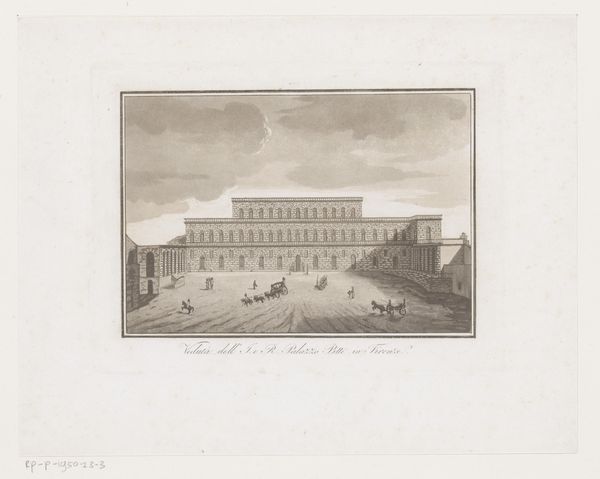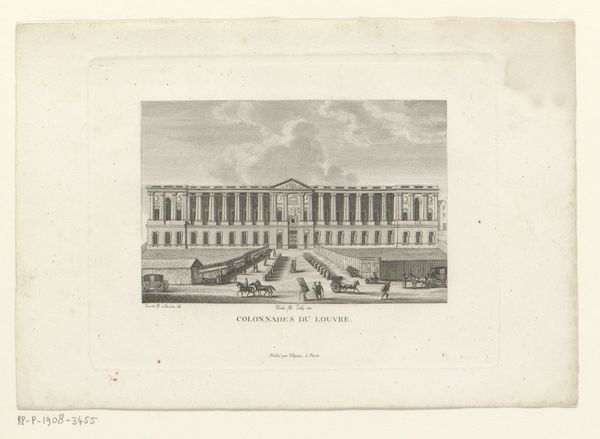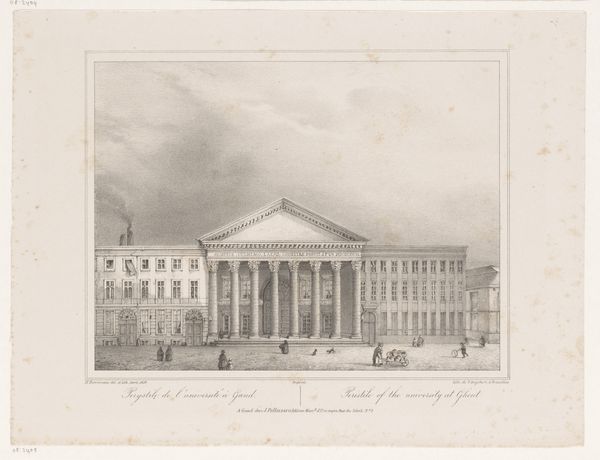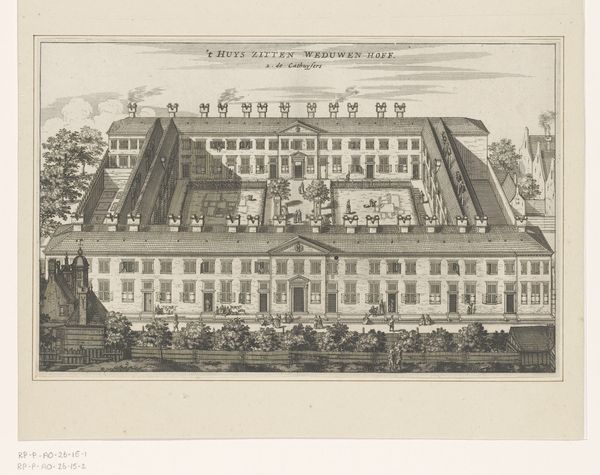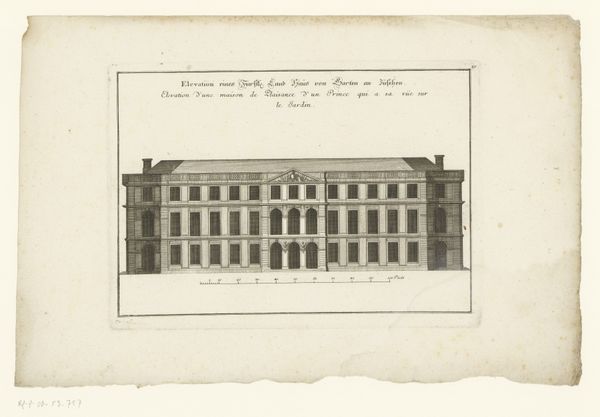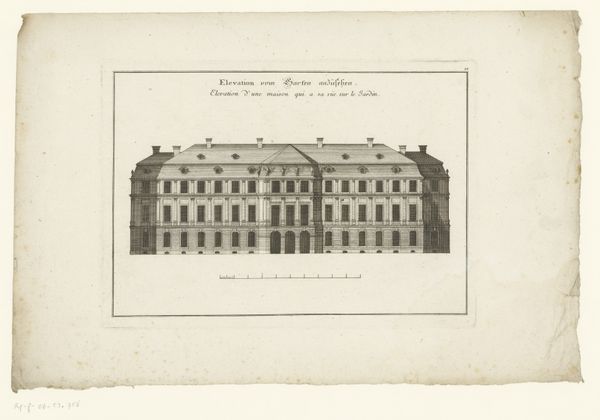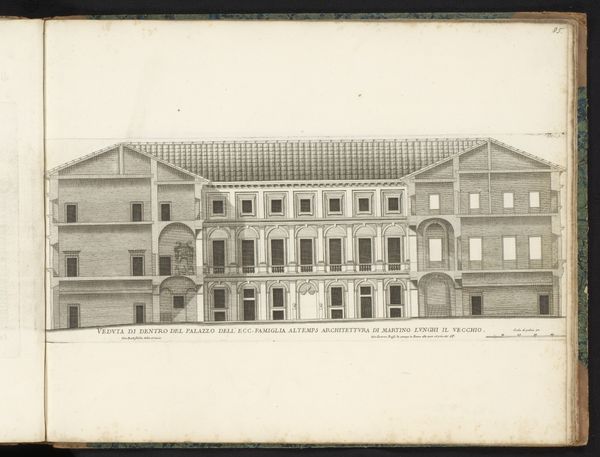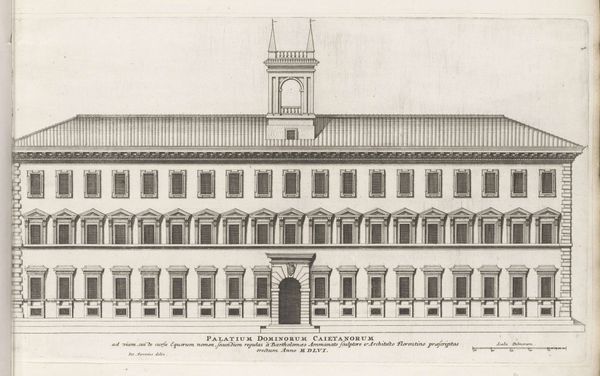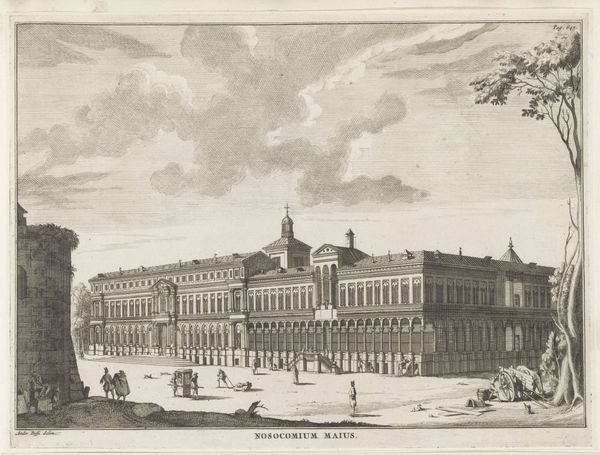
drawing, pencil, pen, engraving, architecture
#
drawing
#
neoclacissism
#
pencil
#
architectural drawing
#
pen
#
cityscape
#
engraving
#
architecture
Dimensions: height 384 mm, width 767 mm
Copyright: Rijks Museum: Open Domain
Curator: This meticulously detailed architectural drawing, titled "Gezicht op het Hôtel de la Monnaie," presents a vista of the Paris Mint. It was rendered between 1759 and 1801 by Claude René Gabriel Poulleau, utilizing pen, pencil, and engraving techniques. Editor: It strikes me immediately as very formal, almost austere. The symmetry is compelling, yet there's a certain coldness in its precision. I wonder about the statement this architectural style makes about power and control. Curator: Precisely. Neoclassicism, the movement to which this work belongs, sought to revive the perceived purity and order of classical art, reflecting an era’s desire for stability after periods of upheaval. The Mint, as a symbol of financial stability, would naturally be rendered in this mode, drawing a direct line to the perceived "rational" structures of antiquity and their socio-political ramifications. It embodies an implicit authority, doesn't it? Editor: Absolutely. This echoes in the building’s facade: the evenly spaced windows, the rigid lines… It projects an image of impenetrable solidity. What does it suggest, I wonder, when the very institution that manages the nation's wealth presents such a fortified face? It mirrors the consolidation of power within centralized authorities during that time. We have to remember this appeared following major social changes. Curator: The symbolism inherent in Neoclassical architecture is profound. Beyond mere aesthetics, each element contributes to a narrative of enduring legacy and administrative supremacy. It's worth noticing the level of detailing with its rendering of depth and light on the façade and in the subtle gradations of the sky. It transcends mere architectural depiction and elevates into something imbued with broader philosophical notions. Editor: And given the period in which Poulleau was creating this, poised on the brink of the French Revolution, such demonstrations of unshakeable structure possess layers of added context. It really encourages us to consider the messages embedded within the built environment and to understand how it both shapes and is shaped by shifting socio-political currents. Curator: A lasting symbolic footprint indeed, offering continued insights into cultural memory and our inherited legacies of governance and value. Editor: Yes, a pertinent reminder that even seemingly objective architectural renderings carry intricate narratives, intertwining aesthetic principles with sociopolitical and economic power structures.
Comments
No comments
Be the first to comment and join the conversation on the ultimate creative platform.


